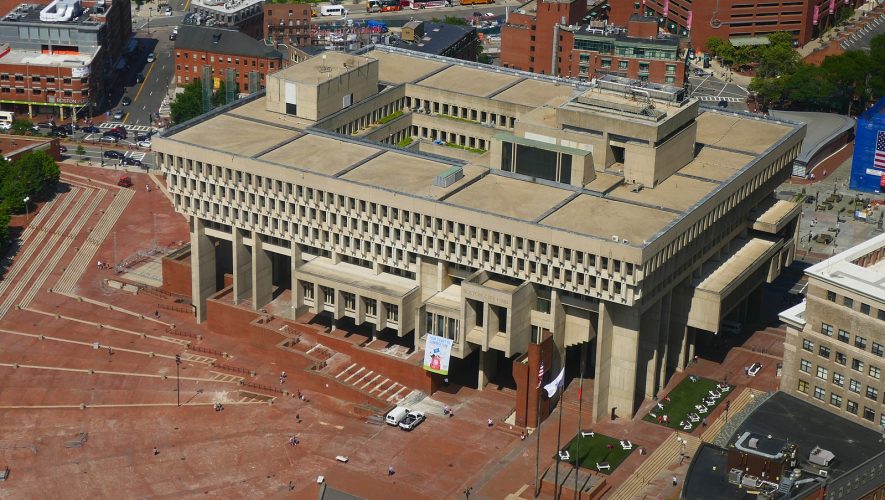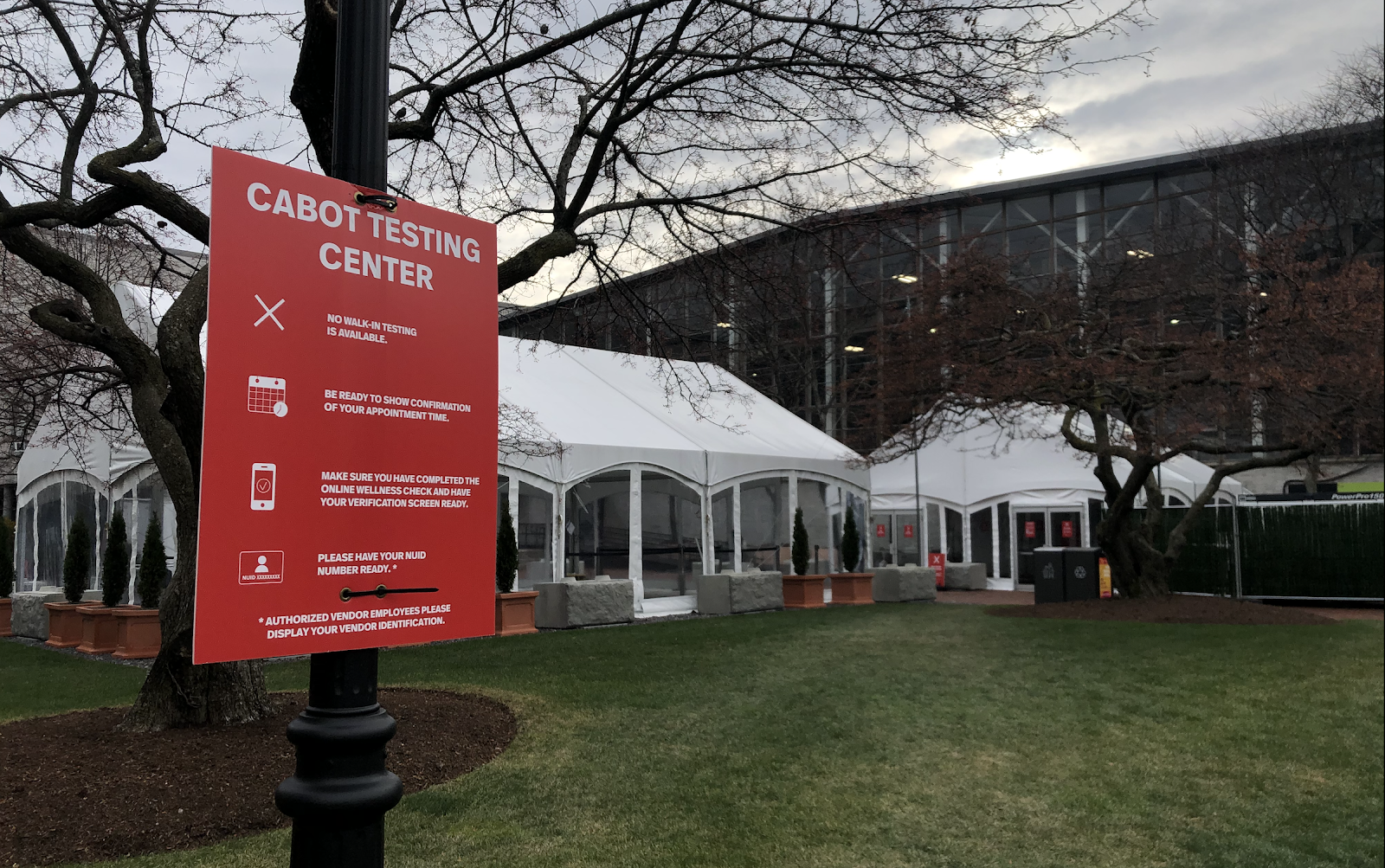Boston Mayor Michelle Wu drafted a plan to relocate the homeless inhabitants living on the intersection of Massachusetts Avenue and Melnea Cass Boulevard, colloquially known as Mass. and Cass. This plan will move Mass. and Cass residents to transitional housing units around the city by late December. While Mayor Wu’s plans aren’t novel, some praise her for acting so quickly, though her proposal has also received familiar criticism. Hanging in the balance are the lives of hundreds of homeless individuals. But how did this situation come about, and will this plan be successful in solving this crisis?
A place called Mass. and Cass
The current Mass. and Cass crisis is a consequence of decades of municipal failure. The Long Island Bridge was two-thirds of a mile long and connected Quincy’s Moon Island to Boston’s Long Island, the home of some of Boston’s neediest residents. First constructed in 1951, the bridge fell into disrepair in the early twenty-first century; faced with a tight budget, Mayor Thomas M. Menino opted to divert funds to other issues, dispatching police to the bridge and limiting capacity.
By 2007, it was apparent the bridge was severely weakening; by 2010, the bridge was “buckling”; and on October 8, 2014, consultants hired by the city officially deemed the bridge unsafe for travel. Mayor Martin J. Walsh ordered that Long Island, which had about three hundred people (mainly homeless and recovering addicts) still on it, be evacuated within hours.
Housing for the displaced became an immediate issue. The Walsh administration set up makeshift shelters in the South End that almost immediately became crowded, and complaints of “inhumane” conditions followed. The crowds soon dissipated into other South End areas, like Mass. and Cass.
Today, Mass. and Cass is an unorganized collection of tents, lawn chairs, and widespread homelessness and drug use. The area nicknamed “Methadone Mile” is an “open-air drug market.” During a six month stretch in 2020, there were twenty-five stabbings, five shootings, and more 311 calls than any other area in Boston.
In the September 9 mayoral debate, Michelle Wu emphasized the extent of the crisis: “we are pouring resources into that area, cleaning the streets … sometimes three times a day … our city workers are working so hard to try to pick up the needles that are discarded there at record rates. But the very next morning, we’re back at square one.”
Boston looks for a solution
Nobody completely agrees on a solution to this crisis, only exacerbating the problem. Initially, Walsh made a lofty promise to repair the bridge and restore access to Long Island, though the venture would be time-consuming and costly. After the bridge was demolished in 2015, Mayor Walsh was just as ambitious, envisioning a new bridge and “recovery universe” on Long Island, which would provide long-term housing and care for those in need. The neighboring city of Quincy, though, ardently opposed the plan, citing traffic concerns.
Eventually, in 2019, Walsh returned to Earth with his Mass. and Cass recovery efforts, proposing increased public workers and police presence, and a more evenly distributed displaced population. Once then-president-elect Biden nominated Mayor Walsh to be the US Secretary of Labor, City Council President Kim Janey took over as acting mayor of Boston. Janey had newfound power, but was not a new voice in the effort to help Mass. and Cass, as she represented Roxbury for many years prior.
Janey became acting mayor during the pandemic’s peak. Without proper sanitation and medical supplies, Mass. and Cass was a potential hotspot for the virus. Janey, whose own uncle died of an overdose in the 1980s, moved quickly to improve the crisis. In the September 9 mayoral debate, Janey argued for a “regional approach” to the emergency, saying that “too much of the burden was falling on Boston” to care for the displaced individuals. Massachusetts Governor Charlie Baker’s administration agreed, and offered to help the city.
In November 2021, Janey completed her term as acting mayor. Janey’s office finished a “Homeless Encampment Liaison Protocol” on October 28, 2021, and by November 1, 2021, residents of the Mass. and Cass area were “ordered to clear out.” Crews packed up people’s belongings, toured apartments with residents, and destroyed their tents.
While many were excited by the possibility of progress, others were more skeptical of the policy, saying the “sweep” of the neighborhood mimics Mayor Walsh’s highly criticized “Operation Clean Sweep” in 2019, which arguably did more harm to the community than good. The Boston Globe projected that “the cleanup will lead to an immediate 30 percent increase in the overdose rate among those who had been living in the encampment” and that the overdose rate will remain elevated for approximately nine months after the sweep.
Furthermore, on November 5, the American Civil Liberties Union (ACLU) sued Boston over the evictions at Mass. and Cass, claiming viable alternative housing was not offered to some residents. A Suffolk County Superior Court Judge recently ruled against the ACLU in this case. As of November 8, Janey was responsible for getting one-fifth of the Mass. and Cass homeless off the streets, and spent her last few days as mayor “chipping away” at the problem.
The 2021 Boston Mayoral Election became another critical moment for the housing crisis. An effective plan for the Mass. and Cass situation was almost a prerequisite for a competitive campaign. With such a qualified field, many candidates featured thoughtful and creative solutions to the issue. Mayoral candidate Andrea Campbell, for instance, proposed reinstating rehabilitation services on Long Island and creating a ferry service. Ultimately, Boston elected Mayor Michelle Wu on November 2, 2021. She will now attempt to solve a crisis that has only grown larger.
A plan from Wu
Throughout several debates, Wu promised to audit and fill all city-owned housing. Among other priorities, Wu proposed reinforcing Boston’s transportation networks, making it easier for homeless and displaced people to travel throughout the city. This proposal comes alongside Wu’s calls for a fare-free MBTA service.
In her first move to combat the crisis, Wu appointed a cabinet-level Senior Advisor, Dr. Monica Bharel, to “spearhead the city’s efforts” at Mass. and Cass. The media has dubbed the position the “Mass. Cass Czar.” The Wu administration also met with the Boston Health Care for the Homeless Program and other community groups to assess the administration’s next moves. With such an ambitious agenda, will Wu be the one to solve this crisis once and for all?
A successful plan will require a certain balance and a delicate negotiation strategy.
Part of what makes the situation at Mass. and Cass such a crisis is the extreme scale of the problem. Many, like Mayor Janey, argued that the issue is too big for Boston to solve alone. Officials have called for neighboring towns to take some responsibility in supporting the population living at Mass. and Cass.
However, if there is something surrounding communities do not want more of, it’s mental health emergencies, substance abuse, and homelessness. Communities want to help homeless individuals, but they want to keep their distance from the problem, a phenomenon Mayor Walsh referred to as “Not-in-My-Backyard paranoia.” This paranoia presents very real issues to solving the larger problem, as local mayors reject plans that call on their cities to help. This reluctance from neighboring cities results in plans to retrofit Long Island and keep many of the displaced individuals out of the public eye.
Wu’s proposal carefully treads the line between the “isolate and solve” and “divide and conquer” approaches. Her administration plans to move homeless individuals to about two hundred transitional housing units throughout the city by mid-December. The residents of Mass. and Cass would be spread throughout the city but within centralized housing, maximizing available treatment and housing facilities while minimizing the impact on the average Bostonian. The plan is not without critics, however, as some argue that housing is too centralized, which could lead to further drug use.
Mass. and Cass has become a crisis so severe that needle pickups are not enough, and the city cannot reasonably keep the homeless safe. Wu’s plan is ambitious, and represents a compromise between the two different approaches that is likely to succeed. With a harsh New England winter en route, action is needed now more than ever. But Wu seems to be eager to solve the problem quickly. As she said in her final mayoral debate: “this is the moment for Boston to step up and do big things to address the challenges we have.”



